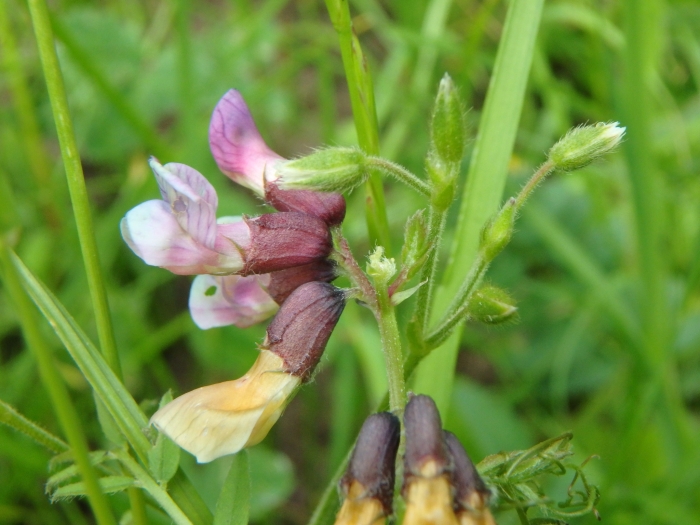Bush Vetch
(Vicia sepium)
Bush Vetch (Vicia sepium)
/
/

Daniel Cahen
CC BY 4.0
Image By:
Daniel Cahen
Recorded By:
Copyright:
CC BY 4.0
Copyright Notice:
Photo by: Daniel Cahen | License Type: CC BY 4.0 | License URL: http://creativecommons.org/licenses/by/4.0/ | Rights Holder: Daniel Cahen | Publisher: iNaturalist | Date Created: 2018-06-02T12:59:29-07:00 |














Estimated Native Range
Summary
Vicia sepium, commonly known as Bush Vetch, is a nitrogen-fixing, perennial leguminous climbing plant. It is indigenous to a range of habitats including grasslands, open woodlands, and forest edges across Europe and parts of Asia. It has been introduced to eastern Canada and the northeastern USA. Bush Vetch typically grows up to 39 inches (1 meter) long, with stems that can twine around other plants for support. The leaves are pinnate with 4 to 8 pairs of leaflets, and it produces clusters of reddish-lilac or lilac-blue flowers that are highly attractive to pollinators from May to August.
Bush Vetch is valued for its ability to enrich soil by fixing atmospheric nitrogen, making it beneficial in agricultural settings as a forage crop and as a green manure. It is also used in gardens for its ornamental flowers and as a natural soil improver. In cultivation, it prefers full sun to partial shade and thrives in well-drained soils. While it is generally low-maintenance, it can become invasive in some areas, spreading rapidly and potentially outcompeting native flora. Gardeners should be cautious about planting it in areas where it is not native.CC BY-SA 4.0
Bush Vetch is valued for its ability to enrich soil by fixing atmospheric nitrogen, making it beneficial in agricultural settings as a forage crop and as a green manure. It is also used in gardens for its ornamental flowers and as a natural soil improver. In cultivation, it prefers full sun to partial shade and thrives in well-drained soils. While it is generally low-maintenance, it can become invasive in some areas, spreading rapidly and potentially outcompeting native flora. Gardeners should be cautious about planting it in areas where it is not native.CC BY-SA 4.0
Plant Description
- Plant Type: Herb, Vine
- Height: 1-1.9 feet
- Width: 1-3.25 feet
- Growth Rate: Moderate
- Flower Color: Purple
- Flowering Season: Spring, Summer
- Leaf Retention: Evergreen
Growth Requirements
- Sun: Full Sun, Part Shade
- Water: Medium
- Drainage: Medium
Common Uses
Bee Garden, Erosion Control, Low Maintenance
Natural Habitat
grasslands, open woodlands, and forest edges across Europe and parts of Asia
Other Names
Common Names: Common Vetch, Hedge Vetch
Scientific Names: , Vicia sepium, Atossa sepium, Atossa sepium var. angustifolia, Atossa sepium var. ochroleuca, Atossa sepium var. subrotunda, Faba sepium, Faba sepium, Vicia anomala, Vicia drymeja
GBIF Accepted Name: